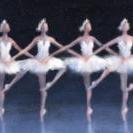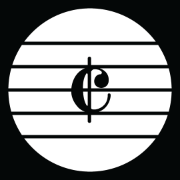Leaderboard
Popular Content
Showing content with the highest reputation on 07/23/2023 in all areas
-
I've been listening to a lot of your music this week and last to help me with my videos. Here are some of the compositions I've listened to. These pieces were either used in my latest videos or I was highly considering making use of them (all opt in): REGENERATION by @Jordan Jinosko A beautiful symphonic work that made its debut in my explainer video Caprice in Seven by @Mikebat321 Very fun piece, made it in my explainer video Aria Of Shadows by @Nikolaos Dimopoulos Great adventurous piece here, the mood just didn't quite fit what I was looking for in my latest video. But a strong contender for future videos for sure. Desert Temple and Sky Temple by @Zeldz Give these a listen! They are superb. Sky Temple made its debut in my latest video actually. And Desert Temple has so many applications for future use in a video. String Sextet in G Flat Major by @Henry Ng Tsz Kiu Gotta love Henry's Sextet! A complex piece, but there are so many goodies here, was used in an explainer video Acciaccatura Study for Violin and Piano by @Carl Koh Wei Hao This one made its debut in my latest video about Chopin, since I talk about acciaccaturas! Mathieu's Submission (For a Ryal Leach Competition) @Mathieu This one is really good if I ever need some type of "suspense" theme!....I am a fan of the Horror genre, and I have added some horror elements in my latest videos. Caprice for solo violin no 3 and 1 and 2 (linked in 3) by @luderart The style can work very well when you only want one voice to convey a certain mood. I've also listened to parts of Chopin's Fantasie Impromptu and Piano Concerto 2.6 points
-
Hi everyone. I've posted this piece before; but have since expanded the work greatly, with lots of new material. Think I should perhaps add more bassoon, to ground the piece with some sort of bass line? The score is very basic and provisional, and has numerous errors; but it still looks nicer than the unedited MuseScore version. The instrumental parts are not labelled, but from top to bottom they are: piano, clarinet, flute, oboe and bassoon. N.B. Have added some revised versions of the piece and score lower down the thread.1 point
-
Hi, I've been workin on this fugue, trying to apply my new knowledge. It's in G major, and there's controversy. In the subject the dominant note (D) appears quite clearly in measure 3. Is it supposed to be transposed tonally, i.e. a fourth up (G) instead of a fifth (A)? I didn't. As you can see in bar 8 it is as an A. It really is an ambiguous case "by the book". Since the D appears prominently but already in the third bar. So I tried to make the answer as you can see, and as it sounded good it stayed that way. The structure is: Exposition, where the 4 voices enter and the countersubject is written in invertible counterpoint. Divertimento, sequence or episode (measure 22) that modulates to the dominant (D). Counter-exposition (measure 26), using inverted subject and countersubject. Divertimento (m. 36) using Corelli's Leapfrog with the subject motive with other schemata and Cudworth cadence (which I like to use a lot). Stretti (m. 44) and mini-exposition with pedal note. Divertimento (m.58) in the subdominant area with plagal cadence and new Cudworth to return to the tonic. Coda (m 65) with perfect authentic cadence. As always happens to me, I'm sure I've missed parallels all over the place. But hey, someday I'll get closer....1 point
-
Then I also propose the first movement ! 🙂1 point
-
Feel free to propose the first movement of that concerto too. I'm listening to it now and it has really good melodic content. I can condense the 18 minutes, so don't worry about that, if that is your concern.1 point
-
Long compositions are fine. I will listen through the whole thing and pick out what I feel are melodic for the video. Thank you for your submission.1 point
-
Can I propose this ? The composition is long but the main melody occurs between 0:00 and 2:001 point
-
this is a composition of my own! Heres a soundcloud link if that'll work: https://on.soundcloud.com/zLZe21 point
-
G'day Lets try this again. The general outline is below (Copied from r/rock and slightly modified) Post whatever you've been listening to lately, whether its a piece you've been listening to a lot, or a new piece you've discovered, it doesn't matter, post it. This is where you can post all requests and recommendations. If you're looking for a recommendation give a description/music link/composer so that other people will know what you want. Example: "I want to hear an composer that sounds like Tchaikovsky" (you can get more specific but this is usually enough) - and then hopefully someone will respond with recommendations X, Y, and Z. You can also leave a top level comment recommending an composer/school that you think others might like if they like X, Y, and Z. The more descriptive you guys are, the easier it is to help you find what you want. Just stating a composer's name isn't that helpful since you might only like one specific aspect of that composer's music.1 point
-
It has a lovely woodwind opening - I enjoyed all the woodwind writing ... and your harmonic movement/orchestration is interesting. Please note page 6 you have the English Horn playing a low A. The lowest note is a Bb - just like the Oboe. Now I believe/heard - you can stick a cardboard tube to extend the bell. On page 23 you have the horns and trombones way up in the stratosphere. Not sure how real players would react! The extreme upper range for the French Horn is 2 octaves above middle C. Please check the trombone range too. Also I think a bit more harmonic movement would add to this work since after a while it feels a bit stagnant (too much of a good thing).1 point
-
Coming out of my very long YC retirement to say I want in 🙂 Does a YT link to an existing composition count? if so: My submission!1 point
-
So people on discord might already know this, but I have been trying to play a bit of the Piano collections from Kingdom Hearts, the the recent ones would be: 1. Hand in Hand - this is the action theme of one of the earliest areas in the game. I like the harmonic changes very much Piano: Game soundtrack (original version): https://youtu.be/H0qgrnqB5vk 2. A Very Small Wish (I have not attempted the monstrous "Monstro" part yet) - from the "Pinocchio" world Piano: Original version: https://youtu.be/41BWUXcYXuU 3. Night of Fate - the first encounter to the main enemy encounters Piano: Original: https://youtu.be/ZU8gY_GTDXA1 point
-
Thank you for listening. Indeed, I listen to and learn a lot from Bartók and there is also some microtonalism here. These small pieces are rehearsals that I do. My greatest interest is in contemporary languages, however, at times (like now) I find myself immersed in studying and doing purely baroque and counterpoint things. And the origin of everything is there, even before, in the cantus firmus.1 point
-
Hey Arjuna, This week I'm reading Peter Williams's biography on Bach, so I'm listening to quite a number of Bach's piece I'd previously unheard of, like this one: This is one full of decorations and chromaticism! This one is an early Bach but it already shows how Bach is capable of maintaining different styles! And Anderszewski... I have heard his recording of Partita no.2 before but I was so fascinated in it yesterday.... What a touch, articulation and voicing that is! Especially the Capriccio! For Tchaikovsy (your pfp), I discovered an unheard Symphonic Poem by him, and it's great! I'm also in love with Bartok Quratet these few weeks... Looks like our world is growing worse towards Bartok's time and I'm getting much deeper to him. My fav. of him now is his 6th String Quartet:1 point
-
@Zeldz This is a great mood for the intro and conclusion of my next video. I'm actually going to release a very long tuplet video (but hopefully more engaging this time around since I am getting a little better with pacing and editing). I will notify you when I release my next video, but be sure you subscribe to my channel. I am eyeing your other dungeon song as well! Please note that I had to repitch just by a semitone (just for the intro) so that it blends well with Chopin's Fantasy Impromptu (I am notating part of that piece on camera as a demonstration of Music Jotter's flexibility).1 point
-
A simple Chopin-esque waltz inspired by Chopin's Op.70 No.3 and Op.69 No.2.Lemme know what you think! Waltz_Simplex_in_C_minor.mid1 point
-
Greetings. I want to present a piano composition I finished recently. This short étude, written in C-sharp minor, is a toccata-like "show-off" piece designed to allow the performer to display his playing skills. This étude also emphasizes the agility of the weaker fingers of the right hand. I was in a state without inspiration when writing this piece, so most parts of the composition were notated spontaneously. Also, I implemented Mike's techniques in enhancing playback realism, so the playback should reflect my interpretation of this piece. Any feedback is appreciated, and I hope you enjoy this piece! Carl Koh Wei Hao1 point
-
Have expanded this piece now with new material starting at 3'28". I've extended Section D to create more of a contrast with the rest of the work, and added a lot more bassoon to Section E. Also improved the score; though the new material isn't included yet. Hopefully it's moving in the right direction?1 point
-
Did some more work on the score. Still need to sort out the ottava markings, and piano runs, as well the overlapping notes between right and left hands.1 point
-
I think you can just notate them in unmeasured bars. I'm not sure if Musescore has that option, but I think unmeasured bars do justice to the cadenza most.1 point
-
That's very true Henry. Not really sure how best to notate my piano cadenza in the opening passage. Playing a Japanese scale glissando on a touch screen piano keyboard is easy; but on a real piano it may be unplayable!1 point
-
Actually tidying up the score can help organize our thoughts and ideas. Sometimes a messy score may hinder our inspirations and polishing of the music. Of course the most important thing is to have new inspirations and ideas, but sometimes if we don't have new inspirations we can take a little bit of time to polish the score to allow later inspirations!! Henry1 point
-
I hope you don't think I'm being nitpicky.... the piece has some good ideas. Seems you're tinkering with trying to find an inner voice -which is awesome!1 point
-
I'm a violist, so I'm partial to the c clef being called alto. It would be called tenor in this case though. Lol. And by break, I didn't mean breathing gaps. Winds have a break that occurs within their ranges -usually from middle to low. One other point is your use of single clef for piano. Since you have the pianist doing runs from low to high, score this for both hands with the grand staff. It'd save time with your notation.1 point
-
I actually envisaged a woodwind sextet with two flutes and two clarinets, so they could play divisi for the passages in question. Sorry should've mentioned that before. Thanks for pointing out the treble clefs in the bassoon part. I actually thought bassoon uses tenor and bass clefs, rather than alto and bass; but guess I was misinformed. Haven't got round to thinking about breathing gaps yet. The flautists and clarinettists could always share out the passages between them, which might help.1 point
-
Having the flute play multiple notes is a tricky technique that very few flautists can do. I'd look having the clarinet or oboe take the bottom note in these passages. Also, bassoon don't typically use treble when the c clef (alto clef) is more common. I agree with Henry, the piece definitely had an oriental flare to it. I'm more concerned with the notation... at times you have wayyyy to many barlines. Use the 8va for these. Also, try to consider that the winds do have clear cut ranges... scalar material for them can be done, but it's best to keep within the timbral range unless you want the change in color that comes with the range difference. Also be mindful of their breaks.1 point
-
Yes I find the score better now, at least the order is right and the parts are not cut! There can be improvements like the parts for the piano since it contains 1, 2 or 3 parts in different times. I would keep it constant with 2 parts and moments like b.100-109 can be written in 2 rather than 3 parts. Sometimes there are flutes playing as well though I expect there's only one. Keep going! Henry1 point
-
Ok, just for you I've made a slightly better score. Obviously there are still major issues with the piano part, and some of the quintuplets in the woodwinds have quantisation errors. Interestingly MuseScore has selected a completely different key signature for the piece (which it did automatically).1 point
-
Orchestration needs to be maintained in your score -regardless of whether you compose for chamber ensemble or orchestra. Parts in the master score need to follow typical orchestrational processes. The parts need to br scored in this order: flute, oboe, clarinet, bassoon, and then piano (with a grand staff). This helps immensely to relay your thoughts more clearly.1 point
-
I am indeed using the Japanese scale in the opening and closing cadenzas. Well spotted Henry! Have also used various Kletzmer and blues scales. One of my ideas for the piece was to experiment with different types of scales, and find ways to combine them. Will definitely make a better score at some point, once I've finalised the piece.1 point
-
Hi @Alex Weidmann I enjoy this expanded version very much, as the harmonic color is really nice in it. It gives me a Japanese feeling for the first and last section with the use of that Db. I love the middle section in F sharp minor as well! Very snowy for me. It's just about the scoring issue. It's quite difficult to read the score since it's cut with different parts 😅. I think the key signature of the middle section should be changed to F sharp minor, instead of using D natural and D flat. I see in some part the clarinet use a bass clef. A clarinet never uses a bass clef though and should be used with treble clef. Even though the instruments never appear together, I love the thinness of the piece as it's quite Japanese for me! I really hope you would add more parts for the bassoon! It's a beautiful instrument and it fits here! Nice job! Henry1 point








